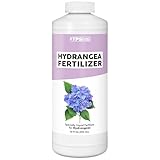In the world of gardening and horticulture, few plants evoke the same level of admiration and fascination as hydrangeas. With their voluminous clusters of blossoms in various hues of blue, pink, purple, and white, hydrangeas are cherished for their striking appearance and their ability to transform any garden into a haven of beauty. However, there’s often a lingering question among garden enthusiasts: Are hydrangeas perennials or annuals? In this article, we delve into the captivating world of hydrangeas to unravel the mystery behind their growth patterns and whether they fall into the category of perennials or annuals. Understanding the nature of these beloved plants is essential for nurturing them to their fullest potential in your garden.
- Beautiful reblooming Raspberry Red and Neon Purple blooms
- USDA zones 4-9
- Plant will ship dormant if ordered mid-fall to mid-spring
- Deciduous – loses its leaves during the winter months
- Water twice per week until established, then water once per week
Hydrangeas
Hydrangeas belong to the genus Hydrangea, a diverse group of flowering plants encompassing various species and cultivars. These plants are renowned for their large, showy blooms, which are often gathered in globe-like clusters, creating a captivating display of colors and shapes. The lush, vibrant foliage of hydrangeas adds to their visual appeal, making them a favorite choice for gardeners and floral enthusiasts alike.
Hydrangea plants are known for their versatility, with different species and varieties exhibiting a wide range of characteristics. Some hydrangeas feature lacecap or mophead flower clusters, while others have cone-shaped panicles. Their distinctive appearance and adaptability make hydrangeas a popular choice for various garden styles, from formal landscapes to cottage gardens.
To understand whether hydrangeas are perennials or annuals, we must explore their lifecycle and growth patterns, which can vary depending on several factors.
Perennials vs. Annuals: Key Differences
In the realm of plants, the classification of perennials and annuals serves as a fundamental distinction based on their lifespan and growth habits:
- Perennials: Perennial plants are those that have a lifespan of multiple years. They typically return year after year, regrowing from their root systems. Perennials often have distinct seasonal growth patterns, with periods of dormancy during unfavorable conditions. These plants are known for their ability to endure through different seasons, providing consistent beauty in gardens.
- Annuals: In contrast, annual plants complete their entire lifecycle within one growing season. They sprout from seeds, mature, produce flowers, set seeds, and die within the span of a year. Annuals do not regrow from their roots, and they rely entirely on seed reproduction to perpetuate their species.
- Hydrangea Fertilizer for Acid Loving Plants
Hydrangeas as Perennials
Hydrangeas, in general, are classified as perennial plants. They exhibit the key traits of perennials, returning each spring to grace gardens with their stunning blooms. These plants are known for their longevity, often persisting for decades when provided with suitable care and growing conditions. The ability to return year after year is one of the hallmark characteristics that endears hydrangeas to gardeners.
Factors Influencing Hydrangea Growth
While hydrangeas are predominantly perennials, several factors influence their growth patterns and longevity:
- Climate: The climate of the region in which hydrangeas are grown plays a significant role. In areas with mild winters and consistent conditions, hydrangeas are more likely to thrive as perennials. In colder climates, they may require extra protection during harsh winters to ensure their return in the spring.
- Variety: Different hydrangea varieties have varying degrees of hardiness and adaptability. Some are more robust and better suited to survive the changing seasons, while others may exhibit characteristics that lean toward annual growth.
- Care: The care and maintenance provided to hydrangeas can significantly impact their lifespan. Proper pruning, watering, soil preparation, and protection from extreme conditions can enhance their ability to return as perennials.
Understanding these factors allows gardeners to create an environment in which hydrangeas flourish as beautiful and enduring perennials, gracing gardens with their breathtaking blooms year after year.
- Hardiness zone 4-9
- Sun to partial shade
- Mature size Height 3-4′ Width 4-5′
- 1 gallon
Cultivation Tips for Hydrangea Lovers
For those who cherish the allure of hydrangeas and aim to nurture them as flourishing perennials, here are some essential cultivation tips:
- Planting: Choose an appropriate location with well-draining soil and partial shade, as hydrangeas typically thrive in these conditions. Ensure proper spacing between plants to allow for adequate air circulation.
- Watering: Hydrangeas have a strong preference for consistent moisture. Keep the soil evenly moist, especially during hot and dry spells. Mulching around the base of the plants helps retain moisture and regulate soil temperature.
- Pruning: Prune hydrangeas at the right time, depending on their variety. Some hydrangeas bloom on old wood, while others bloom on new growth. Understanding your hydrangea’s blooming pattern is crucial for proper pruning.
- Soil pH: Adjust the soil’s pH to influence the flower color of some hydrangea varieties. Acidic soil tends to produce blue flowers, while alkaline soil results in pink flowers. Conduct a soil test and amend the soil as needed to achieve the desired flower color.
- Protection from Cold: In regions with harsh winters, consider protecting hydrangeas by covering them with burlap or providing winter mulch to insulate the roots.
- FOR USE ON: For all Acid-loving plants; Use Espoma Organic Soil Acidifier for azaleas, hydrangeas, rhododendrons, blueberries, evergreens, strawberries, camellias, and all plants that thrive in acidic soils.
- TURNS HYDRANGEAS BLUE: Turn Mophead & Lacecap hydrangeas blooms to an electric blue by adding Soil Acidifier and lowering soil pH
- CONTAINS: Soil Acidifier contains elemental sulfur and gypsum
- FOR ORGANIC GARDENING: Soil Acidifier is approved for organic gardening; It is a registered Organic Input Material meaning it meets all requirements for organic production
- MADE IN THE USA: Product of the Espoma Company. The leader in natural organics since 1929
Annual Hydrangeas: Varieties and Exceptions
While the majority of hydrangea varieties are indeed perennials, it’s worth noting the existence of certain exceptions. Some hydrangeas, particularly those cultivated as annuals, are bred for specific characteristics, such as compact size or unique flower colors. These annual hydrangeas may not return in subsequent years and are typically treated as one-season wonders.
Examples of annual hydrangeas include certain varieties of the popular ‘Endless Summer’ series, which are prized for their prolific blooms but may require replanting each year in colder climates.
Conclusion
In the grand tapestry of garden flora, hydrangeas emerge as enduring perennials, capturing the hearts of gardeners and enthusiasts worldwide. With proper care, they stand the test of time, gracing gardens with their magnificent blooms season after season. Understanding the distinction between perennials and annuals sheds light on the remarkable nature of hydrangeas, allowing us to appreciate their resilience and beauty.
While there are exceptions in the form of annual hydrangeas, these unique varieties add a touch of novelty to our gardens, offering new possibilities in color, size, and form. Whether perennial or annual, hydrangeas enrich our outdoor spaces and provide endless inspiration for those who seek to cultivate their charm and elegance.








